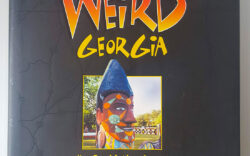Mars, the Red Planet, has fascinated humankind for millennia. The little world revealed more of its magic, mystery and majesty when an unmanned American spacecraft aptly named Perseverance made a gentle and on-target landing on the surface of Mars in February. Soon after the landing, Perseverance began sending back color images of the rocky Martian terrain, while a microphone on the robotic craft picked up the sounds of the wind on that tiny world. Scientists also hope to get a bird’s-eye view of the Martian surface by deploying a 4-pound helicopter drone called Ingenuity, carried to Mars aboard the Perseverance rover.
Ancient Romans named Mars after their god of war because of its angry reddish color. The Italian astronomer Galileo first viewed the planet by telescope around 1610. Interest in the Red Planet peaked in the late 19th Century when a wealthy American named Percival Lowell built an observatory in Arizona dedicated to the study of Mars in an effort to discover signs of intelligent life there. In his book Mars as the Abode of Life, Lowell voiced his belief that Mars could be the home of an ancient and advanced civilization. In 1898, author H.G. Wells penned War of the Worlds, a fanciful account of an invasion of Earth by beings from Mars. Forty years later, in 1938, thousands of Americans were frightened by a radio broadcast of War of the Worlds in the form of a “breaking news” story.
Science fiction magazines and stories like pioneering sci-fi writer Stanley Weinbaum’s 1934 publication of “A Martian Odyssey” kept Mars on the minds of Earthlings during the frightening times of the Great Depression and World War II. In the postwar 1950s, movies and television shows often featured monsters from Mars, but audiences also viewed a realistic depiction of astronauts voyaging to the Red Planet when Walt Disney aired a TV show called “Mars and Beyond” in December 1957—just two months after the Space Age began with the Soviet Union’s Earth-orbiting Sputnik satellite.
By the 1960s, both the United States and the Soviet Union had attempted without success to send robotic spacecraft to Mars. Not until 1965 would Mars reveal some of its secrets when America’s tiny 575-pound probe, Mariner IV, flew past the planet and beamed back 22 grainy black-and-white photos of its cratered surface. In the decades that followed, other unmanned spacecraft from the United States and other countries would explore Mars, including two successful Viking landers that touched down on the planet in 1976 and a series of NASA rovers that have roamed the Martian landscape since the 1990s. Perseverance and Ingenuity are just the latest in a long line of Earth’s electronic emissaries to our neighboring world.
As humans explore Mars close up with color and sound, Ray Bradbury must be smiling in his grave. The beloved writer, who died in 2012 at the age of 91, brought fright and delight to millions with such works as Fahrenheit 451 and Something Wicked This Way Comes. He brought Mars down to Earth in the years after World War II with his publication of The Martian Chronicles, a series of stories about human flight to Mars. “Space travel will be just as silly, sad, exciting and wonderful as any other great human adventure,” said Bradbury.
Scientists recognized Bradbury’s influence when spacecraft began to show the first clear views of the planet he had described in fiction. Bradbury was invited to the California control room during Mars missions in 1971 and 1976, and a digital copy of his Martian Chronicles was carried to the planet’s surface aboard a NASA lander in 2007. Another Mars landing site was named Bradbury Landing a few weeks after the writer’s 2012 death.
Humans need a sense of beauty and wonder here on an Earth so often despoiled by human folly. Missions to Mars show that Bradbury was right when he said, “If you enjoy living, it is not difficult to keep the sense of wonder.”
Like what you just read? Support Flagpole by making a donation today. Every dollar you give helps fund our ongoing mission to provide Athens with quality, independent journalism.










